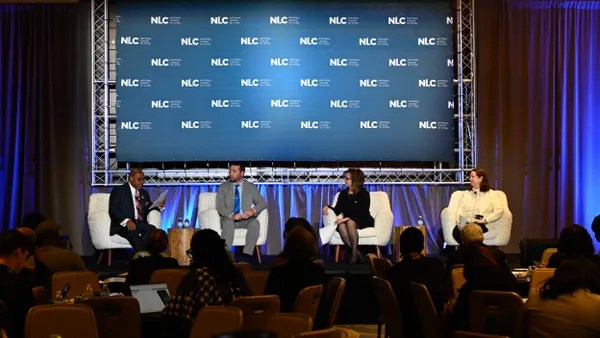San Antonio’s smart cities program was missing something when it launched in 2017, and the city’s team knew it, said Emily Royall, smart city administrator. “We realized what was missing was hands-on interaction with our residents,” she said.
This realization was the city’s impetus for creating the SA Sandbox, an annual event where residents and Smart Cities staff come together to explore and discuss the technologies that San Antonio is implementing or hopes to.
“[Residents] could learn about smart cities technology and we could get their feedback,” Royall said. “We prioritized hosting these events in public parks so everyone could [attend] them.”
Smart Cities staff chose parks in three “innovation zones” the city had identified: downtown; Brooks, a former military base converted to a master-planned living and working community southeast of downtown; and the medical center neighborhood on the northeast side. Using information from the Equity Atlas, a project Smart Cities developed with the city’s planning department to identify the most underserved communities, the team also decided to host a Sandbox event on the southwest side of the city.
The Sandbox is designed to engage residents in discussing the role technology can play in the community, Royall said. For example, last year the city was piloting “Hello Lamp Post,” a digital assistant that can answer residents’ questions about construction in the community. Smart Cities staff wanted feedback on how user-friendly the tool was.
“Most of the sentiment we got was positive – ‘This is a tool I’d like to see in my neighborhood,’” Royall said. But one person who attended the event in a wheelchair said the QR code users need to scan was too high. The city lowered it.
Smart Cities San Antonio also used the Sandbox events to allay resident concerns about a smart streetlights pilot project in 2021 by having the technology vendors participate in the Sandbox events.
Residents had privacy concerns about streetlights that could detect auto accidents and near-misses, said Brian Dillard, the city’s chief innovation officer. “We took that into account when we chose lidar,” a technology that creates algorithms that study accident data but doesn’t capture anything on video, Dillard said. Residents also said they wanted access to the data, and they will have it.
The Smart Cities team has used the events to raise awareness of tech-oriented community services as well. Residents can sign up for an affordable connectivity program that provides subsidies for digital access, Royall said. Adults can also sign up for career programs. Codeup, a community nonprofit, was on-site registering residents for coding classes.
The Sandbox events even offer activities for kids from age three through high school so they can see themselves as creators of technology, not just users, Royall said. “We have coding for kids as young as three years old,” she said. “They can program robots on the spot.”
Children can also race drones and play augmented reality games. One such game, Magical Park, debuted at a Sandbox event, Royall said. A kid can enter a park and activate a geographically realistic game.
“It’s a great way to get kids who aren’t digitally savvy excited in our public park system,” said Royall.
She has two pieces of advice for other cities considering similar events. First, the support of community partners is critical, she said. Her staff works with about 25 local nonprofits.
“They have programming, coding classes,” Royall said. “We want to bring them together under one roof. We need them to be willing collaborators.”
Even more basic, “meet residents where they are,” she said. “Our intention to do this in public parks is specific. We’re showing up in their neighborhood.”










